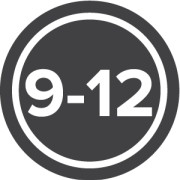
Applying Rights & Liberties
Most people are familiar with freedom of speech and freedom of religion, but there are other rights and liberties that benefit us every day. In this unit, students learn the difference between civil rights and liberties and identify them through analysis of the Constitution, Bill of Rights, and other primary sources. Students also gain an understanding of how their rights and liberties can be expanded or limited by the government.
Choose Grade Level:
-
Game
Do I Have a Right?
-
Lesson Plan
Speech and the First Amendment
-
Lesson Plan
Religion and the First Amendment
-
Lesson Plan
Amendment Mini-Lesson
-
Lesson Plan
Amendment Mini-Lesson
-
Lesson Plan
Citizenship Clause
-
Lesson Plan
Equal Protection Clause
-
Lesson Plan
Civil Rights Act of 1964
-
Lesson Plan
Voting Rights Act of 1965
-
Game
Do I Have a Right?









